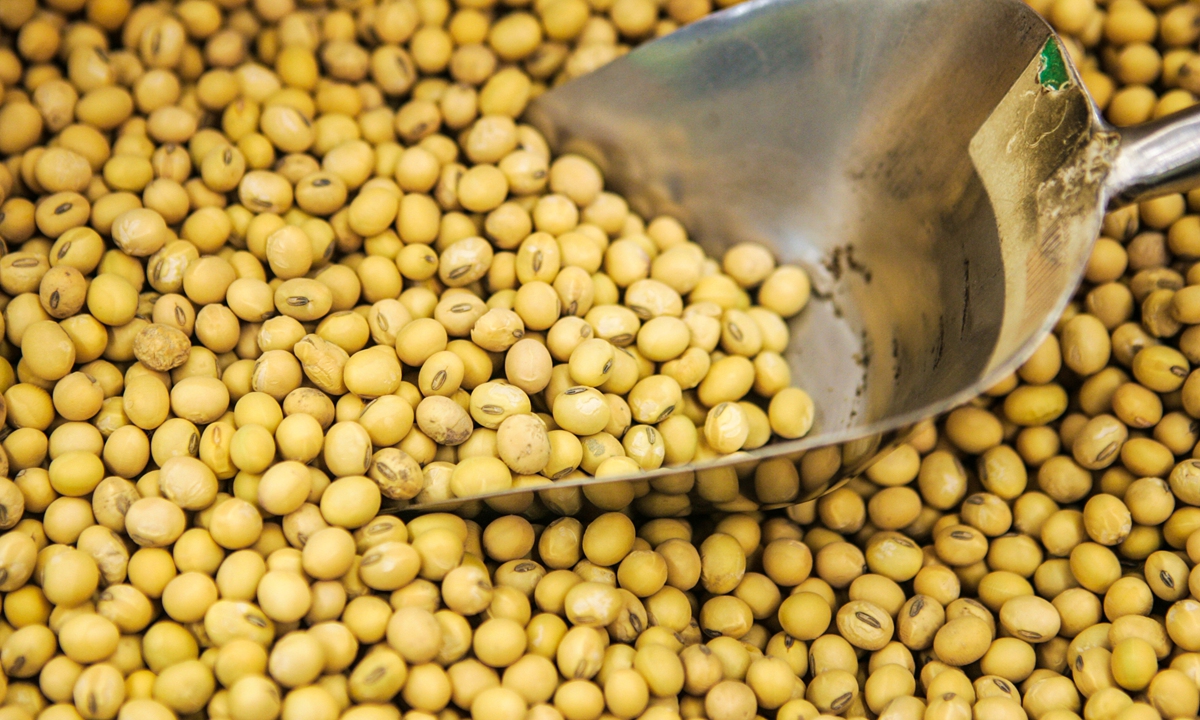
Soybean Photo: VCG
The China Soybean Industry Association (CSIA) predicted that soybean imports in October may fall to a two-year low of about 5 million tons as the nation aims to reduce reliance on imports, in order to stabilize supplies and prices amid falling US soybean exports.
Since September, the price of soybean meal, an important material for hog feed, has remained high. The domestic spot price of soybean meal exceeded 5,000 yuan ($699) per ton recently.
The CSIA didn't cite any specific factors for the import decline. But media analysts and experts said that logistics disruptions caused by the historic low water level of the Mississippi River, a major transportation route for US agricultural goods, and lower production due to climate change each played a part.
Post-harvest US soybean exports have yet to ramp up during what is normally the busiest month for shipments, which is bad news for top importer China, Reuters reported on October 7.
Private-sector consultancy Informa forecasts US soybean production in 2022/23 at 4.327 billion bushels, down from an earlier forecast of 4.378 billion bushels.
Meanwhile, China's home soybean supplies are breaking records, thanks to the government's efforts in expanding production to stabilize prices and supplies.
Northeastern China, the nation's major soybean production base, has entered the harvest season, with good news coming up regarding production expansion in the region.
In Heihe, Northeast China's Heilongjiang Province, the biggest soybean production hub in China in output, local farmers have cultivated 15.693 million mu (1.04 million hectares) of soybeans this year, 3.14 million mu more than last year, according to media reports.
Some domestic pig feed producers have cut the ratio of soybean meal in their products, a move to ease tight supplies.
For example, Muyuan Foods Co, a major domestic hog and pork producer, said the company saved 1.3 million tons of soybean meal compared with the average level by using just 6.9 percent of soybean meal in its compound feed for pig breeding in 2021.
China's dependence on soybean imports is as high as 70 percent, with the US being the second-largest source.
Amid global uncertainty and the need to stabilize supply and price, China has reduced the amount and proportion of soybean meal imports, including soybean meal imports from the US.
From January to August, the cumulative import of soybeans was 61.329 million tons, a year-on-year decrease of 5.786 million tons, or 8.6 percent decline. It was the lowest reading since August 2014.
The impact of logistics disruptions caused by the Mississippi River water level will be temporary, and US soybean supplies to China are expected to rebound to 8.8 million tons in November from an estimated 5.4 million tons in October, the CSIA said.
The Ministry of Agriculture and Rural Affairs has promoted the reduction and replacement of corn and soybean meal in animal husbandry by increasing domestic soybean output, while reducing dependence on imported soybean meal, according to media reports.
Global Times


